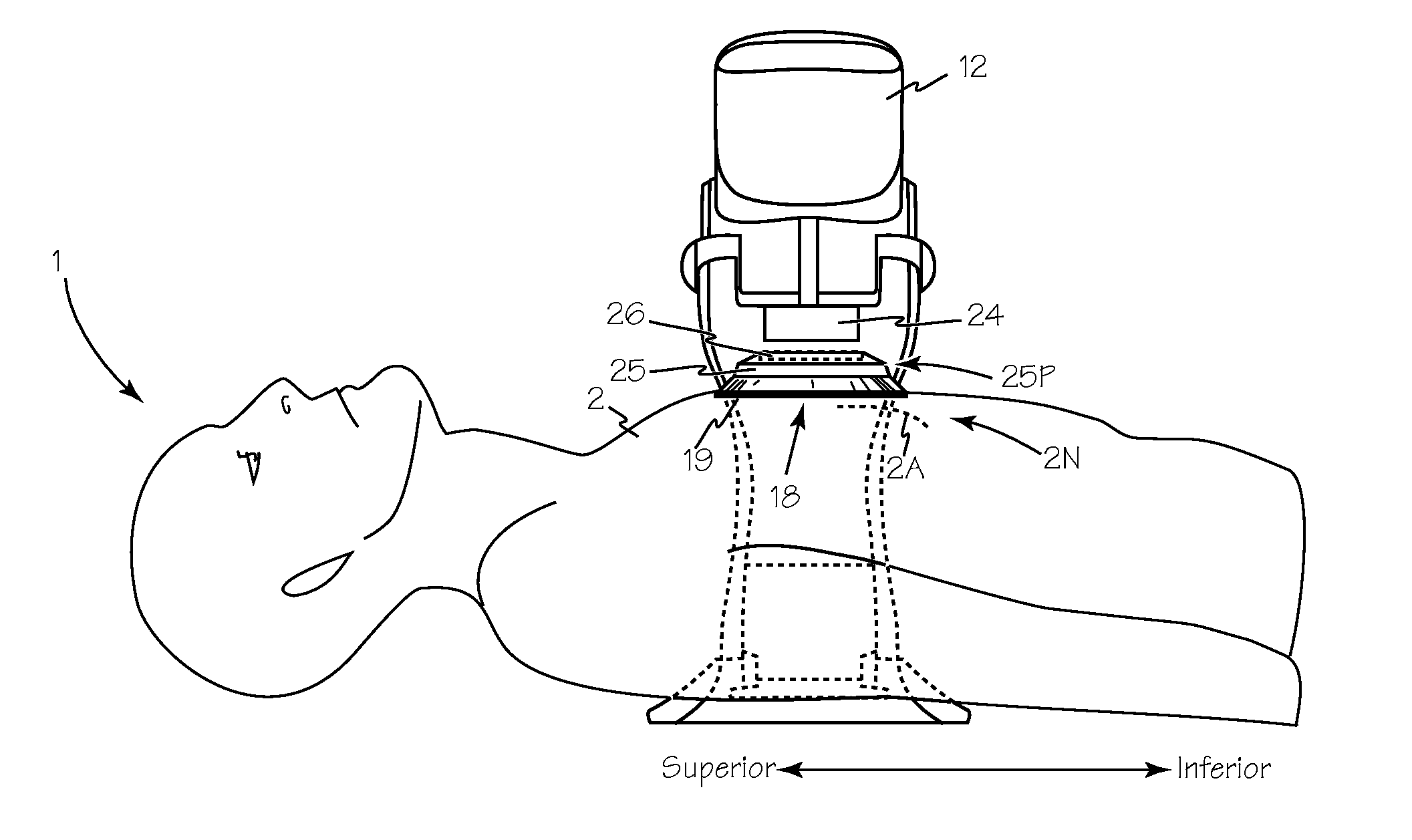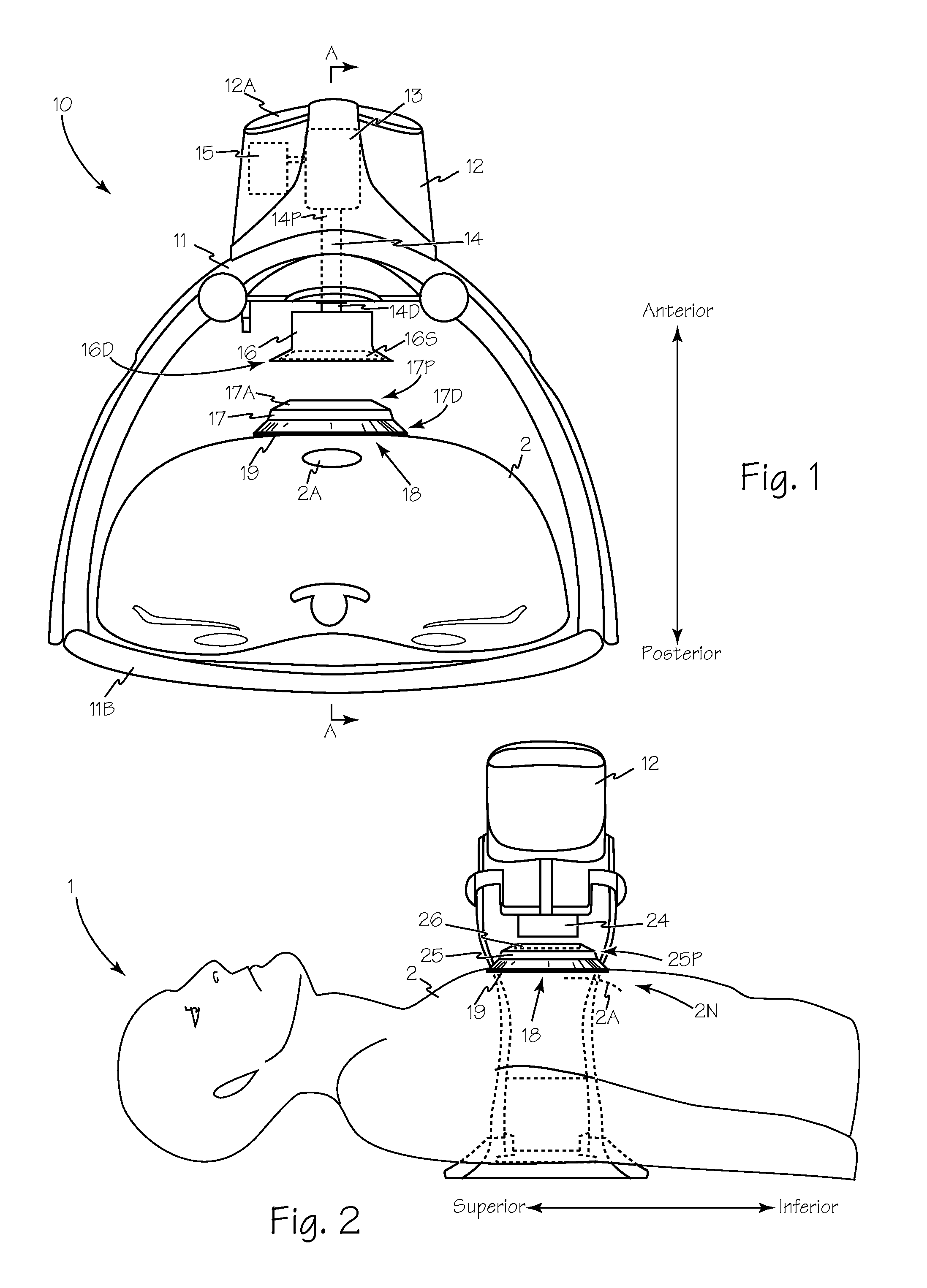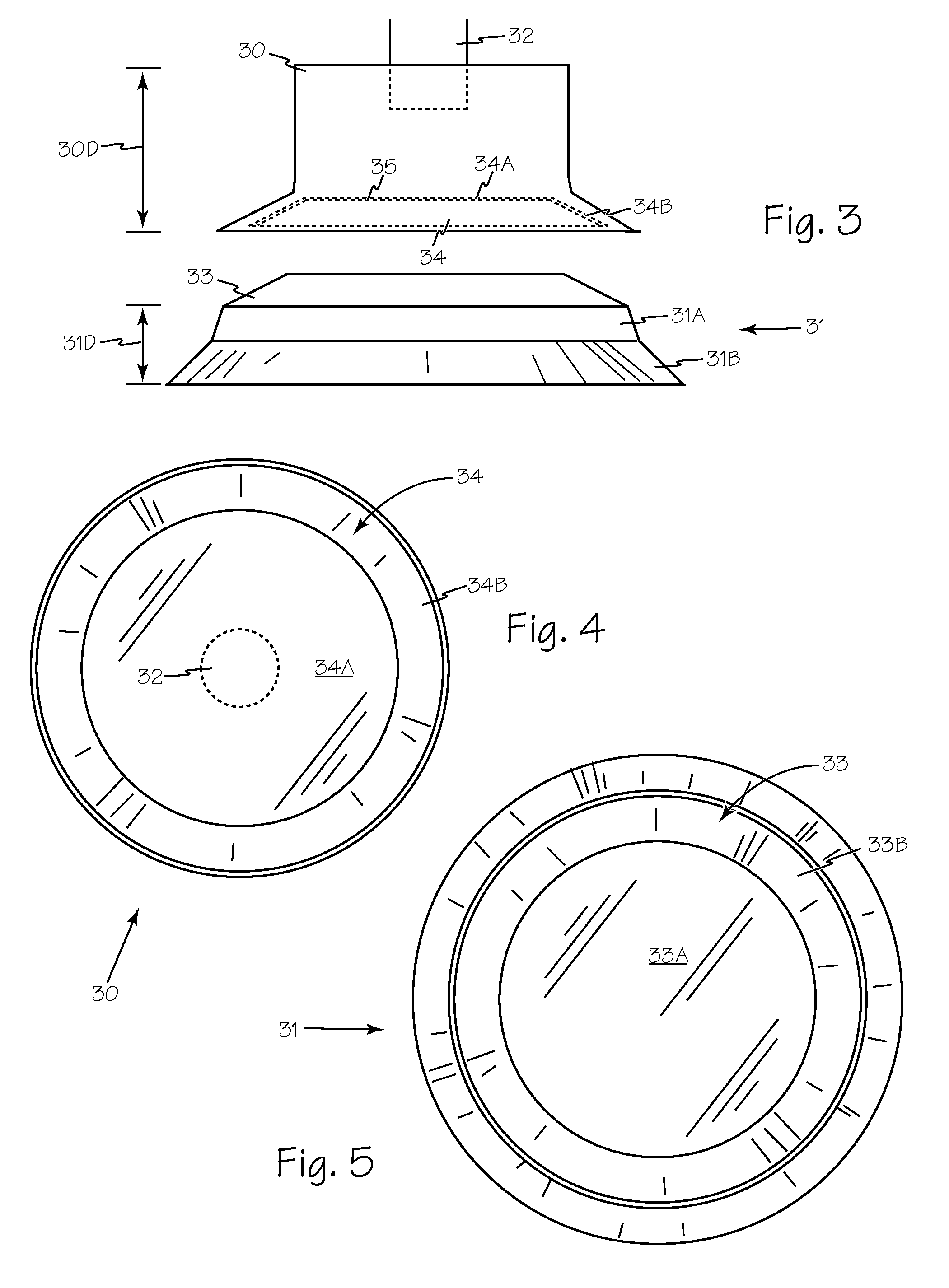Mechanical Chest Compression Plunger Adapter and Compression Pad
- Summary
- Abstract
- Description
- Claims
- Application Information
AI Technical Summary
Benefits of technology
Problems solved by technology
Method used
Image
Examples
Embodiment Construction
[0025]In FIG. 1, mechanical chest compression device 10 is oriented to apply compressions to the chest 2 of patient 1. Chest compression device 10 includes support structure 11 and backboard 11B which supports and orients chest compression unit 12 apposing sternum 2A. Chest compression unit 12 includes any suitable drive means such as motor 13 which may be a reversible electromotor, a linear actuator or the like. Plunger 14 has a distal end 14D and a proximal end 14P, and proximal end 14P of the plunger is operably coupled to motor 13. Distal end 14D of the plunger extends from and withdraws into the housing upon operation of motor 13. A motor control unit such as controller 15 is operably connected to motor 13 and includes a microprocessor to control the operation of the motor and the plunger. Plunger adapter 16 is secured to the distal end of the plunger and compression pad 17 removably engages the plunger adapter.
[0026]Distal end 16D of plunger adapter 16 is sized and shaped to a...
PUM
 Login to View More
Login to View More Abstract
Description
Claims
Application Information
 Login to View More
Login to View More - Generate Ideas
- Intellectual Property
- Life Sciences
- Materials
- Tech Scout
- Unparalleled Data Quality
- Higher Quality Content
- 60% Fewer Hallucinations
Browse by: Latest US Patents, China's latest patents, Technical Efficacy Thesaurus, Application Domain, Technology Topic, Popular Technical Reports.
© 2025 PatSnap. All rights reserved.Legal|Privacy policy|Modern Slavery Act Transparency Statement|Sitemap|About US| Contact US: help@patsnap.com



